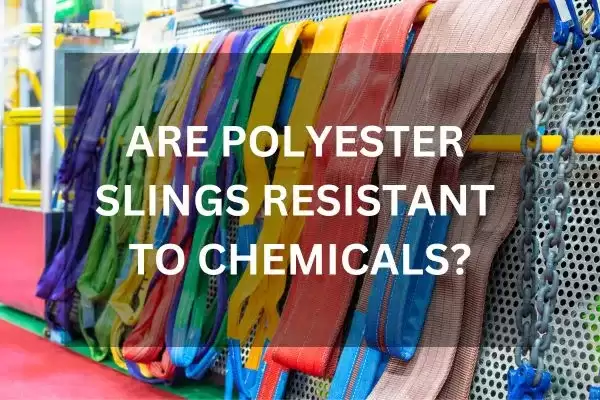100 %

Sep 29,2023
Polyester slings have become indispensable tools in various industries thanks to their strength, flexibility, and durability. However, when it comes to environments with chemicals, questions arise about their resilience. In this article, we will delve into the intricacies of polyester slings and their interaction with chemicals, providing you with the knowledge you need to make informed decisions in your industry.
In industrial settings, the resistance of materials to chemicals is of paramount importance. The consequences of using equipment that is not chemically resistant can be severe, leading to potential hazards, damage, and costly replacements. Factors such as the type of chemical, concentration, and duration of exposure all play a role in determining a material's resistance.
Polyester, as a material, exhibits inherent chemical properties that contribute to its resistance. Its molecular structure grants it a degree of protection against certain chemicals, making it suitable for a wide range of applications. However, it is essential to be aware of its limitations and avoid exposing polyester slings to extremely corrosive substances.
Corrosive chemicals can pose a significant challenge to the integrity of polyester slings. Acids, alkalis, and solvents, if not handled with care, can gradually weaken the fibers and compromise their load-bearing capacity. It is crucial to identify the chemicals present in your working environment and assess their potential impact on the slings.
To ensure the safety and reliability of polyester slings, rigorous testing protocols have been established. These tests evaluate the material's performance when subjected to various chemicals. Manufacturers adhere to industry standards to guarantee that their products meet the necessary criteria for chemical resistance.
When working with chemicals, it is imperative to follow established guidelines for the safe use of slings. Storing slings away from direct contact with corrosive substances and conducting regular inspections are essential practices. Additionally, promptly replacing slings that show signs of chemical damage is crucial for maintaining a safe working environment.
Numerous industries benefit from the versatility of polyester slings in chemical-laden environments. From chemical plants to laboratories, these slings have proven their worth in safeguarding both personnel and valuable assets. Case studies highlight successful applications and provide valuable insights for similar scenarios.
While polyester slings offer a commendable level of chemical resistance, alternative materials such as nylon and wire rope may be better suited for specific applications. Understanding the strengths and weaknesses of each material allows professionals to make informed decisions based on their unique requirements.
Polyester slings are formidable tools, but like any equipment, they have their limits. Understanding their chemical resistance properties and following best practices is crucial for ensuring their longevity and, most importantly, the safety of your operations. By incorporating these insights into your workplace, you can harness the full potential of polyester slings in chemical environments.